by Briscoe White | Jan 19, 2011 | Containers, Gardening, Growing, Herbs, Indoor Gardening, Miscellaneous, Urban Gardening |
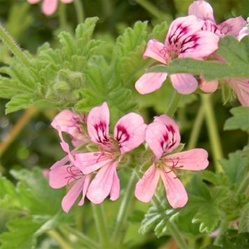
There are over 200 variations of Pelargonium, each with a specific scent and beauty.
Oh Scented Geraniums, so lovely, so fragrant, so easy to grow, so…not even geraniums at all! Scented Geraniums are not considered “true” geraniums and are of the genus Pelargonium, but their leaves do resemble geraniums and they share the same botanical family. Their success as portable container plants make them favorites in almost any climate, both inside and out. Scented Geraniums are native to South Africa, but became hugely popular with Europeans in the early 16th century. Thomas Jefferson was known to grow several varieties at the White House, and here at The Growers Exchange, we sell three of our favorite varieties: Citronella, Old Fashioned Rose, and Atomic Snowflake.
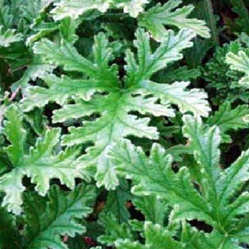
The sweet Citronella fragrance comes from the plant's foliage, not its blooms.
Citronella is probably the most well-known, due to its use as a safe and natural insect repellent. Oil from this plant is commonly extracted from the plants and added to home-made and over-the-counter products. Many gardeners also plant bushes of Citronella in their gardens, and simply swipe the mass with a broom to bruise the foliage, which releases the plant’s fragrant, citrusy aromas. Though it’s sometimes debated whether this actually works effectively as a repellent, when planted in large quantities, we’ve noticed a significant decrease in mosquitoes around our patio on warm summer evenings. We’ve also found that the lemon and rose varieties are the best for container planting. They will grow compactly but a little goes a long way! Their perfume will freshen your patio or home as long as you keep it nice and happy with plenty of sun and adequate watering.
Great in the garden but also quite content in a hanging container or pot, be sure to provide well-drained soil, and not to over-fertilize. It is actually better to under-fertilize than over-fertilize these aromatic beauties, as soil excessively rich in nutrients (especially Nitrogen) can cause leaves to be less fragrant. Fertilize from spring through fall for best results, and fight the urge to fertilize during the winter. This is when the herb naturally slows down production, and fertilizing at this point may trick it into a false growing period, which will result in less than favorable bloom and fragrance production.
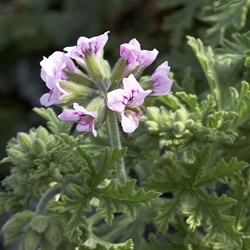
Clusters of sparse blooms are a defining characteristic of the Pelargonium.
Thriving in bright light, be sure to place them in a southern-facing window with ample mid-day sunlight if growing indoors. Preferring daytime temps around 70 degrees, these continuous bloomers will flower until the first frost. Overall, scented geraniums are quite drought-tolerant and therefore relatively easy to grow plants. Do not allow them to completely dry out before waterings, but at the same time be sure not to over-water, as constantly saturated soil can cause root rot problems. Clay pots help gardeners who tend to get a bit water-happy, as they allow excess water to seep out through the porous clay. Moisten only the soil when needed, rather than watering the whole plant, to ensure that it gets just enough water without drowning.
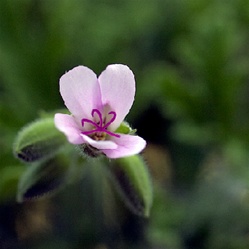
Though they vary in shape, size and color, every variety shares the same five-petaled bloom design.
Prune in early spring for fuller blooms and foliage. Cut right above the node with clean, sharp shears. Pinching and pruning redirects the plant’s energy back into the remaining stem, forcing it to sprout new, thicker, fuller growth. Early spring pinching takes advantage of the plant’s natural growing season, allowing the plant plenty of time to grow before its natural slower-growing-months of winter. They are also a popular bonsai plant and can be pruned and trained to resemble a more fragrant replica of a bonsai tree.
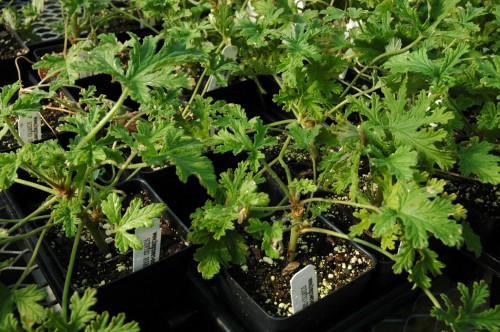
Growing Scented Geraniums is easy if you give them lots of sun and adequate water.
Scented Geraniums can be germinated from seeds or propagated from stem cuttings. When growing from seed, they typically germinate quickly, sprouting in a mere few days to a few weeks. Keep the seedlings out of direct sunlight as they will not grow if the soil is warmer than 75 degrees. From trial and error, it seems that plants started from seed rather than propagation tend to be stronger, and resist disease and cold temperatures better. After planting, you should see blooms twelve to sixteen weeks after the seeds are sown. If propagating from cuttings, make sure to start in early fall, and to cut four to six inches from a healthy, mature plant just below where leaves or nodes are growing. Taking a large enough cutting, typically containing three to four leaves, should be a big enough piece that should stand any stress from the transplanting process. Also, once the new plant has established a root anchor and is beginning to mature, be wary when pruning. Pinch the growth tips back by mid-February or the beautiful blooming clusters will be postponed in flowering.
by Briscoe White | Jan 18, 2011 | Containers, Gardening, Growing, Herbs, Indoor Gardening, Miscellaneous, Recipes |
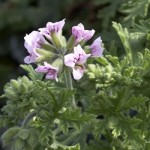
Citronella Scented Geranium
Long-loved for their intense fragrances that range from fruity and floral, to earthy and spicy, Scented Geraniums, or Pelargoniums are an amazingly aromatic ornamental and culinary herb. Cousin to the garden-variety red “grandma’s Geranium” seen so often growing in window boxes and flower beds across the South, Pelargoniums are in the same family and though they share the name, are not “true” Geraniums. First discovered in the 1600’s in South Africa, Pelargoniums were originally lumped in with Geraniums because of their resemblance and similar habit, but as their popularity rose and botany progressed, their taxonomy changed and they were given their own distinction. They received the name, Pelargonium to define them separately, which is derived from the Greek word for “stork”, as part of the bloom seems similar to a stork’s bill.
Reaching the height of their vogue in the Victorian Era, Scented Geraniums were cultivated in greenhouses throughout Europe for the herb’s numerous rich aromas, until fuel had to be reallocated to war efforts, which left enthusiasts unable to heat their greenhouses. With over two hundred varieties of this lovely, fragrant herb, it’s no surprise that they remain a favorite garden, patio and culinary herb for today’s gardeners. The biggest bonus of the Pelargonium is its intensely scented foliage. Depending on the variety, the leaves may be dainty and lacy, rounded or sharply defined, and come in many different verdant hues from light to dark green, including some species with cream or golden variegation on its fringes. Typically, the plant’s blooms have little to no smell, leaving the leaves with the bulk of the herb’s fragrance. Just as with their leaves, depending on the type of Pelargonium, blossoms may come in a variety of colors, patterns and shapes. Generally they all share the same five-petaled design, offering gardeners the option between pink, purple, white, red and yellow hues, masked centers, and wide or thin blooms. (Some even resembling miniature Orchids!)
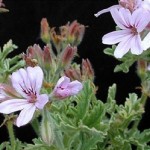
Rose Scented Geranium
In the kitchen, these herbs infuse desserts and other dishes with their scent, and delicately translate their perfumes to our taste buds. Pairing well with fruits like apples, melons and bananas, scents like Rose or Lemon really enhance the flavor of the meal. Try adding some of the Lemon or Peppermint leaves, wholly, to your next iced tea. You can also line the bottom of your cake pans when baking, with Scented Geranium leaves to infuse your favorite cake with a natural flavor. Also used to make syrups, jellies, liqueurs, and flavored butters, Scented Geraniums are a deliciously versatile herb.
Pelargoniums have also long been believed to possess magical and spiritual powers, usually dependent upon the scent or color. Thought to be a good luck charm for healthy, love, protection and powerful in repelling evil and negativity, Scented Geraniums were (and continue to be) used in bath infusions, perfumes, herb pillows and protective sachets. Though used solely in these functions for their fragrance in modern days, superstitions tied to specific scents still linger. It was once believed that Nutmeg Scented Geraniums would bring someone financial good fortune, while Rose Scented varieties would bring a healthy love life. Beliefs were also based on the color of the blooms, such as White Pelargoniums were a symbol of fertility, while Red strains meant strength and protection.
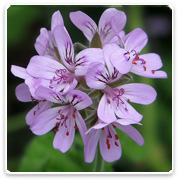
Atomic Snowflake Scented Geranium
Also used in arts and crafts like wreath and potpourri-making because of their long lasting fragrant leaves, Scented Geraniums are like nature’s little air fresheners! Fill your home with citrus and floral scents the natural way and stop using costly, chemical-based candles (plants won’t accidentally burn your house down!) and plug-ins. Lemon and Rose scents tend to grow ideally in containers and make great houseplants. Place them in a sunny window or in a high traffic area–brushing past the scented leaves will release each plant’s specific aroma and will revitalize your senses, especially after a long day. You can also place the leaves in your pillow case or dresser drawer. This will not only repel moths but perfume your laundry and soothe you as you sleep.
Three of our favorite varieties of Scented Geranium are the Citronella, Rose and new this year, the Atomic Snowflake! Each offers a distinct scent and beauty that performs well in the kitchen or garden and is ideal for container growing in or outdoors on patios and windowsills. We love making scented sugar for baking by alternating granulated sugar and Rose Pelargonium leaves, sealing the layers in a jar and leaving it in a sunny window for two weeks. This infuses the sugar with the delicate aroma of fresh cut roses and tastes delicious on cakes and cookies! If grown in high quantity, the Citronella variety is said to repel mosquitoes. Debated in the scientific and gardening communities as to its results, we love its citrusy smell—it reminds us of warm summer evenings. Last and certainly not least, our newest and one of the most beautiful breeds, is the Atomic Snowflake. The name alone brings excitement to mind and its hybrid scent of floral and fruity tones will make a great culinary garnish and a potent perfume for your home or garden!
by Briscoe White | Jan 17, 2011 | Containers, Gardening, Growing, Herbs, Indoor Gardening, Miscellaneous, Urban Gardening |
When talking about Rosemary, my mind immediately wanders to the kitchen. That savory piney smell that wafts out from under pot lids, or from a steaming roast or loaf of bread just out of the oven. One of the most basic culinary herbs, Rosemary has remained popular for many reasons since its early use in Greek and Roman cultures where it was used for everything from repelling evil and sickness to symbolizing fidelity between lovers. Though long believed that if grown in kitchen gardens, Rosemary represented the strength of the matriarch of the home, in modern times Rosemary has lost its gender bias and is a culinary herb enjoyed by all. A member of the Mint family, Rosemary is a cousin to Basil, Oregano and Lavender, which explains why they grow and taste so great together! Yet, one of the best reasons to love Rosemary is its ability to grow in many different climates and zones and for its versatile usage and easy care. To give you an idea of what we mean, here’s a crash course in Rosemary!
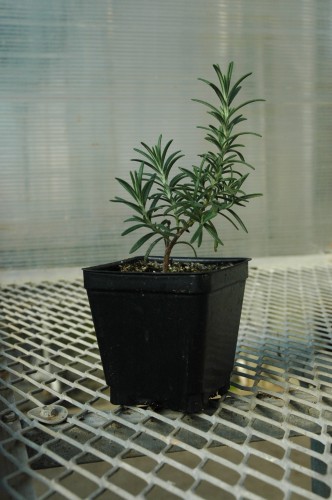
By far the most cold-hardy variety, ‘Arp’ has thin, silvery, needle-like leaves. It’s the plant’s uniquely sized foliage that I believe makes it so temperature-tough, as with less surface area the plant is able to conserve its energy and essentially becomes impenetrable to cold weather. Aromatic and easy to grow, this variety is great because it gives chefs who live in more northern zones, like Zone Six, a delicious culinary option when other herbs can’t survive. Also quite drought resistant, try planting Rosemary ‘Arp’ as a low-growing hedgerow. Brushing past it will release its wonderful scent.
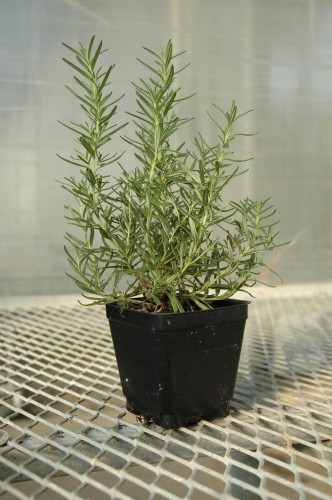
Typical of the traditional Rosemary foliage, ‘Hardy Hill’ is the second most cold tolerant variety and produces characteristic dark green, needle-like foliage. A terrific culinary herb, ‘Hardy Hill’ will survive in cold areas as low as Zone Seven and is drought tolerant. Great on potatoes, in stews and breads, or to season meats, ‘Hardy Hill’ really comes through when the temperatures are low. Similar to Rosemary ‘Arp’, yet possessing a darker color, ‘Hardy Hill’ grows well in containers as well as in your garden, and can be grown indoors during extremely cold temperatures.
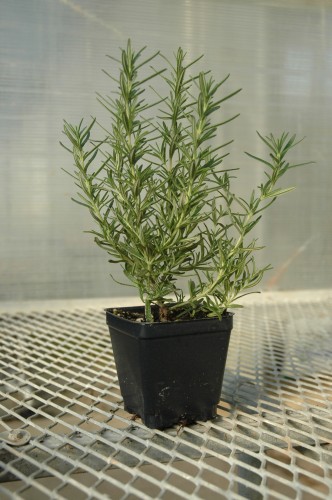
Very similar in habit and look as ‘Hardy Hill’, without the extreme hardiness. ‘Salem’ is a more cold sensitive variety of Rosemary but is more useful in the kitchen. Not only can you use its flavorful foliage to lend a savory distinction to your favorite dish, but you can use its woody branches for barbecue skewers. We actually tried this over the summer when we had lamb kabobs. The natural fragrance and flavor of the Rosemary infused the meat as it cooked over the grill, releasing tons of taste and perfuming the air. Give this a shot the next time you’re grilling pork, lamb or beef. If you don’t feel like making skewers, try sinking the sticks into the full piece of meat to really cook the amazing aroma into your dish. Perennial in Zone Seven through Zone Ten, ‘Salem’ has light, almost smoky green foliage.
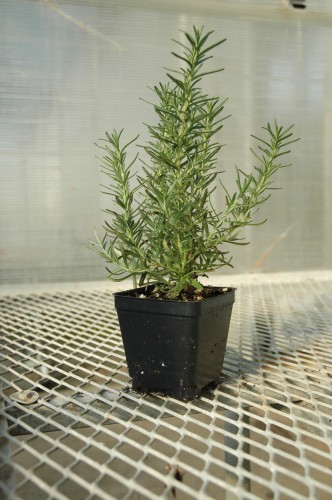
By far the most beautiful of the Rosemary varieties we grow! ‘Tuscan ‘Blue’ produces tons of beautiful blue flowers and lush foliage, making this variety the ideal Rosemary for topiaries. As useful in the kitchen as it is beautiful in the garden, ‘Tuscan Blue’ is used to flavor dishes in many of the same ways as its hardier cousins. Also a terrific indoor herb because of its lovely fragrance and glossy, dark green leaves, ‘Tuscan Blue’ has an erect habit and grows best in Zone Eight through Zone Ten. It’s sometimes best to container plant this delicate beauty for moving indoors, as even cool evening temperatures may upset it.
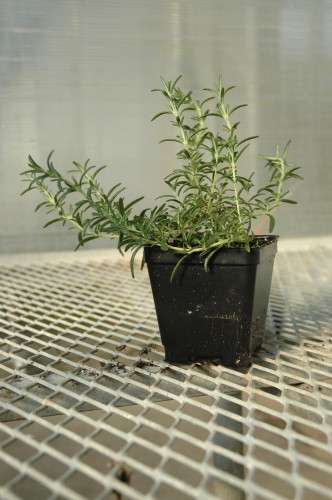
A great ground cover Rosemary, ‘Prostrate’ is not terribly hardy, but where it’s warm enough, this great variety won’t let you down. A landscaper’s dream, ‘Prostrate’ can be planted as a stand alone landscaping shrub, so it doesn’t take up room in your garden. Fashionable and functional, just make sure to plant it in close proximity to your kitchen for easy use. This great dual purpose Rosemary will brighten your yard and your kitchen without using valuable garden space. Try planting this along a garden wall or in a large planter and let it spill over the edge to create a culinary cascade!
Regardless of which Rosemary you prefer, they all have terrific culinary and aromatic value. Planting them in your garden or keeping them indoors will provide you with a delicious herb for your favorite recipes as well as a wonderful fresh fragrance that can’t be matched. Try using your favorite Rosemary variety in wreaths, potpourris, or as centerpieces. By adding Rosemary to a mesh sachet, you can place it in your bath for a soothing soak or in your drawer to freshen up your laundry. You can even extract the oils and use it as an all natural perfume that will actually condition your skin! We love working with this versatile herb in the greenhouse, as we always leave smelling of its sweet, piney scent. The possibilities for using Rosemary are endless! No matter what zone you live in, we have a Rosemary for you, so don’t be discouraged by your location!
by Briscoe White | Dec 22, 2010 | Basics, Containers, Flowers, Gardening, Herbs, Indoor Gardening, Miscellaneous |
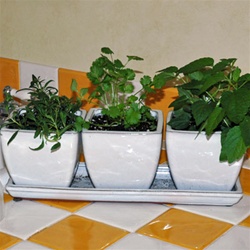
With winter here and in full force already (whether we like it or not), I’ve had to bring in a number of our outdoor plants. My first concern was to find space for all of the various sized pots and to make sure no one was going to trip over them. Once I had my living clutter settled in for the season, I began thinking about how to keep them healthy and happy throughout these long cold months, especially when we have everything from cacti to hardy herbs like Rosemary. Depending on what type of plants have moved into your home for the holidays, here are some general rules of thumb and just plain good advice for keeping them alive and well.
Lighting
We don’t think much about the amount of light outside as it changes from season to season, when we’re indoors and warm with electric lights, but this is a major factor for your plants. Especially with this time of year being the shortest amount of daylight we’ll see, you need to make sure your plants are getting the amount they need. Though probably dormant for the season, your flowering plants tend to like more light than evergreens, cacti and other foliage hardy plants. Whether you unsash your curtains, open the blinds or add additional artificial light, your plants will need a little UV boost through the winter. Even getting your hands on the best led grow lights will offer your plants with the right amount of sunlight that can help them to flourish in their surroundings. Make sure to turn them occasionally to allow all sides and leaves to get plenty of light. This will also help them from growing at a crooked angle, as most tend to grow towards a light source.
Water
If you’re feeling dried out from running your heat on high, chances are that your plants may be, too. Make sure to water them appropriately. Excluding cacti and other succulents, an easy way to tell if your plant needs water is to stick your finger partially into the dirt to test it. If it’s bone dry, don’t drown it. Water moderately and monitor its progress. If you find that your plants are needing water at alarming rates, check to see where you have them placed. On top of a radiator or next to your fireplace may be too hot for their liking.
Temperature
So, you’ve moved your little green friends indoors and you figure that should keep them safe from the temperatures, right? Think again. Some plants can be highly sensitive to heat and cold so make sure you aren’t placing your Basil plant near a cold, drafty vent or your Lemongrass right beside your wood furnace. Depending on their particular needs, temperature can even speed and slow the growth process for your plants, just like an artificial changing of the seasons. For example, with Amaryllises, because they are flowering bulbs, temperature plays a huge part in their growth cycle. We brought some in from the greenhouse for the holidays and the ones placed near our radiator bloomed in a week! I guess we tricked them into thinking it was Spring!
Cleaning and Prevention
Another great thing about having your plants close at hand when it’s too cold to go outside, is that you can’t help but to notice them. The winter months are a great time to get to know your plants’ personalities and to give them a good cleaning. Dust and microscopic debris build up on the plant’s leaves which can block sunlight and the plant’s pores. Try cleaning the tops and bottoms of your plant’s leaves with a damp cloth to remove any unwanted buildup that may be hindering your plant from being its healthiest. While you’re at it, take a close look for insects and disease. For a longer lasting plant, it’s best to nip an infestation or blight in the bud. In most cases, warm water and a mild soap will do the trick to remove many common pests. For a deeper rooted problem, try an all natural pesticide or fungicide, which can be bought at your local hardware store.
Positioning
Plants prefer a routine and moving them into your home can be quite an adjustment. To alleviate further disruption to their transition indoors, try to find permanent spots for them when you bring them in. If you can place them in areas where they won’t be disturbed by the hustle and bustle of the holidays, pets, kids or just because they’re in the way, they’ll greatly appreciate it. Moving potted plants too often can really disrupt and unsettle their soil and root structure. Leaving them to settle in and stay sedentary will cause the least amount of stress on them, as leaves, stems, flowers and branches can break, become weak or tear during the moving process. This will also allow the roots to stay strongly grounded, as soil won’t be jostled about, loosening the plant’s hold.
Potting
Making sure your plants are in the best pot or container is also crucial to its health. Think about it. When you start to outgrow your shoes, the constriction and tightness is uncomfortable, right? Well, many plants need to be moved to larger containers as they get bigger to give them more adequate space to stretch and grow bigger. The winter is a great time for this as the cool temperatures make the process less stressful on your plants. Give your plants plenty of room to grow and you’ll get to enjoy larger and longer lasting results.
Once the stress of the holidays has wound down, indoor gardening can be a terrific therapeutic hobby…or, during the holidays if you need an escape from the madness! Gardening, in general, can actually make for a very fulfilling past time as it can keep you productive, environmentally-minded, creative and, by growing your own produce, can actually save you money. For other hobby ideas, be sure to visit this website – https://tlhobbyideas.com. Gardening year round allows you to enjoy the fruits of your hard work constantly and the calming presence of your indoor plants will bring beauty and fresh aroma to these bleak winter days. Many plants can be easily started indoors during the colder months, for transplant in the spring to an outdoor garden. Try growing your favorite culinary herbs indoors this season to spice things up in your stews and other hearty recipes or just to lend a savory fragrance to your home. By growing now, you will be more prepared once spring gets here!
by Briscoe White | Nov 22, 2010 | Containers, Indoor Gardening, Inspiration, Miscellaneous |
As the holidays quickly approach, we’ve started thinking about some of our favorite aromatic herbs that will help bring your home to life this season. It’s time to toss out those artificially scented candles and store bought fragrances and go all natural instead!
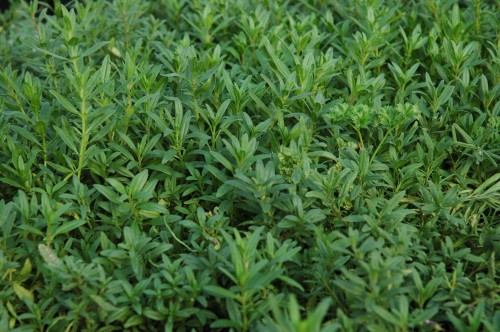
Hyssop
Hyssop has a long been popular for its warm anise fragrance. Used originally by the Ancient Greeks to cleanse their homes and temples of evil spirits and misfortune, Hyssop’s rich sweet smell continues to permeate homes across the world. A terrific medicinal herb as well, Hyssop has proven in modern medical trials that it may act as an herbal deterrent to symptoms of HIV. A member of the Mint family, Hyssop makes a wonderful addition to any wreath or centerpiece for an all natural perfume as inviting as the smell of holiday cooking!
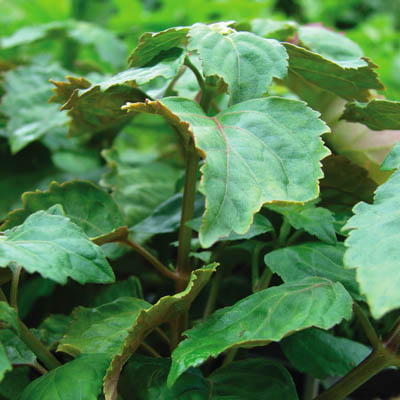
Patchouli
Another cousin from the Mint family, Patchouli has been a friendly favorite well before Woodstock! Patchouli’s leaves are chocked full of its warm, earthy aroma and its essential oils are used by many as an herbal perfume. When warmed, these oils emit a stronger fragrance. Try dabbing a little on a cooled sixty watt light bulb, and once turned on, the smell of Patchouli will begin to heat and waft throughout your home! Patchouli oil also makes a great skin conditioner to help keep your skin soft and supple against abrasive winter winds. Try introducing this sweet scent of the Sixties to your family this holiday season by mixing it in with wreaths or centerpieces!
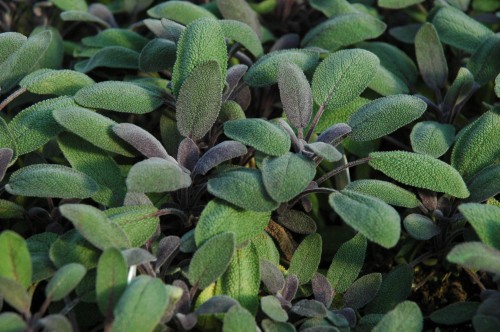
Sage
You may be familiar with tried and true Sage varieties that make great culinary companions like Garden Sage, but for gorgeous centerpieces and fragrant house plants, try planting Purple Sage! Slightly less aromatic than Garden Sage, Purple Sage makes up in beauty what it may lack in scent. With alternating green and purple leaves that grow more vibrant as cooler weather sets in, Purple Sage will make a terrific addition to any wreath or holiday decoration. The dusty purple contrasts nicely with Magnolia leaves, Evergreens and Hyssop and the faint scent of camphor will remind you of a home cooked meal.
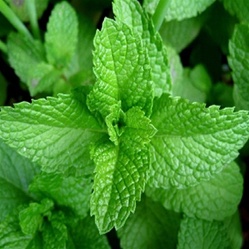
Mint
For a more traditional holiday smell, celebrate the season with Mint! Used in many holiday drinks, Mint is an extremely fragrant herb that conjures memories of candy canes and visions of sugar plums. Whether added to hot chocolate, utilized in a savory centerpiece or just grown in a decorative pot or container, Mint makes a great holiday scent. The menthol in Mint’s essential oils will bring a cool, fresh breath to your home during those stuffy winter months. Try a modern twist on an old favorite herb and give the spicy Cuban Mojito Mint or lemon-scented Citrus Kitchen Mint a try!
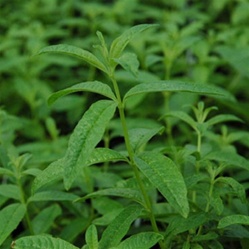
Lemon Verbena
Lemon Verbena blends pleasantly with the Mentholated smell of Mint to really make your home smell cool and clean! Terrific in teas Lemon Verbena has a strong lemon scent that will remind you of Summer, all Winter long. Whether used in holiday decorations, family meals or just grown on a sunny window sill, Lemon Verbena will be a delight all season long. For a blend of citrus perfumes, try creating a tea or arrangement with Lemon Verbena and Citrus Kitchen Mint. Let sunny Lemon Verbena chase away the Winter blues!
by Briscoe White | Dec 7, 2009 | Containers, Gardening, Growing, Herbs, Indoor Gardening, Miscellaneous |
We have been growing herbs as potted plants for about 25 years. Way back then herbs were not available even in the larger greenhouses; having a selection of herbs is what made our garden center stand out from the others. Herbs are now a mainstream crop, not the exotic niche market it was a few short years back.
Potted herbs are still our main crop, but after agreeing to grow a few custom orders for cut herbs we are growing and shipping more each year. I guess we are not exactly local since almost all these cut herbs go to NYC, but we are a lot closer than many growers selling in NY. Virginia to NY in less than 24 hours is the key to our success, the herbs are on a restaurant table in 48 hrs. A few years ago I would not believe this possible, but the internet has linked the farm to the world!
Attempting to grow cut herbs year round, we are experimenting with the towers pictured. Herbs are: Oregano, Marjoram, Zaatar, Parsley, and Basil. These herb towers will allow us to grow cuts in the greenhouse in winter. Catnip for the kitties and the rest for cooking. Fresh herbs make a difference!





















